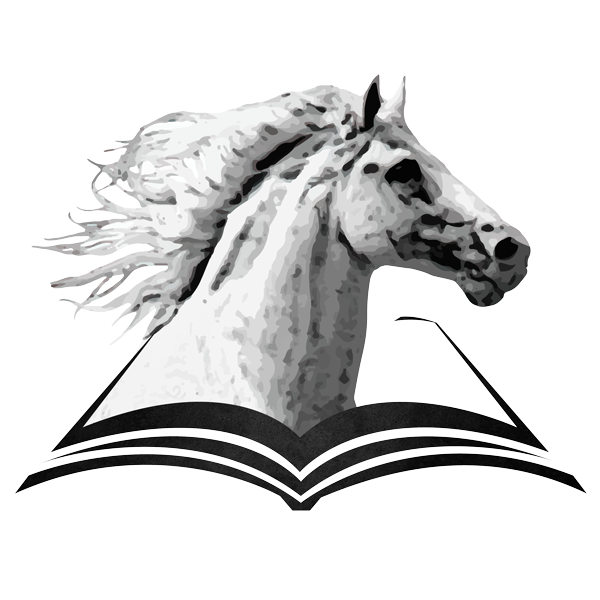This article is about history and may not be too appealing to you because it does not seem to have any information to be used on your horses right away. Well, if you love horses, by reading will help you understand better why horses have transformed human history and why millions of people around the globe are passionate for horses, exactly like you are.
Let’s see how horses have been a changing factor of history:
Since prehistoric time, the horse has played a very important role in human life. Based on archeological research, it has been determined that equines were initially hunted 23,000 years B.C. by ancient cultures, who used the meat as food and the skin as clothing and shelter. After thousands of years of hunting, horses were domesticated and became an important factor in history.
Dogs were probably the first domesticated mammal species. Later, other mammal species, such as cats, cattle, and sheep, were domesticated by nomadic and semi-sedentary tribes of the Old World, before horses were domesticated. However, NO DOMESTICATED ANIMAL HAS HAD AS GREAT AN INFLUENCE ON HUMAN CIVILIZATION AS THE HORSE, due to the following reasons:
- Once horses began to be used as a means of transportation, people were able to travel long distances on land faster than ever before, and with much less effort. This allowed man to conquer new wildernesses.
- Trade rapidly increased because horses provided fast transport of goods from the areas of production to the trading centers.
- The cultures that had the largest and best trained armies with horses (used for both pulling wagons/chariots with warriors and for riding in the battlefield) dominated other cultures and expanded their empires.
After a time, the horse became extremely important not only as a means of transportation and in war, but also as a working tool (e.g., drafting, cattle herding) and as a means of communication (e.g., the great empires in history had riders on horses that transported messages quickly). In addition, equestrian sports developed and grew in popularity.
DOMESTICATION OF THE HORSE
It is not easy to determine the exact time when horses began to be domesticated or the place where it occurred. Most researchers agree that horse domestication could have started in different areas of the Old World, such as the Middle East (between the Black Sea and the Persian Gulf) and Central Asia, at the end of the Neolithic age (about 4,000 – 4,500 years B.C.). The initial purpose for herding horses was to use the meat as a protein source, the skin as clothing and shelter, and the manure as combustion for bonfires.
About 3,500 years B.C., domesticated horses were kept in many areas of the Old World by different cultures (from Spain and Morocco to China), not only to obtain food (milk, blood, and meat) and goods (clothing and shelter), but also for carrying, pulling, and moving loads. Later, the horse was used for riding. Since that time, the horse has become one of the most important underpinnings of different civilizations and has transformed lifestyles.
From the time the horse was domesticated until today, several changes occurred that resulted in better control of the horse. The first tack used on the horse was a piece of cord or line wrapped around its neck and extended, as a rope, for one or more people to hold. Soon after, a second wrap was added around the horse’s muzzle for better control. The most vigorous horses required a third wrap of cord in their mouths for control, which was later replaced by bits made of hard materials, such as bone, horn, and wood (See Chapter 14: “The bit – magic or science?”). Bits made of metal were designed as soon as humans learned how to use different metals (e.g., copper, bronze, iron) between 1,200 to 700 years B.C.
Once the mechanical advantage of wheels was discovered, wheels began to be used with horses. Carts and heavy wagons with four wheels and chariots with two wheels, were pulled by horses to transport goods and warriors. This provided efficiency in transportation and military power.
It is not known exactly when and where horses began to be shod. However, it is known that metal horseshoes were applied to the horse’s hooves during both the Greek and Roman empires. At the beginning, the metal horseshoes were tied to the hooves with cords (not with nails), like sandals. Later they were nailed as it is done today. Horseshoes gave comfort to the horse’s hooves for traveling long distances on abrasive surfaces, which allowed the cavalries of those empires to become faster and more powerful.
INSPIRATION OF ARTISTS
Since the time when man hunted equines to eat, the horse has been the inspiration of artists in many cultures. Probably the first artistic manifestations that were inspired by horses were several drawings found in Spanish and French caves from about 13,000 years B.C. They depict horses running alone and others being hunted by man.
After that, most human civilizations have displayed images of the horse in different ways:
- Carved and painted on vases, plates, jars, etc., either for decoration or daily use, and on everyday useful tools (e.g., maces and knives).
- Carpets and furniture, such as chairs, tables, beds, and lamps, have been decorated with equine images.
- Earrings, bracelets, pendants, rings, and other ornaments have been made in the shape of horses.
- The horse has been engraved on coins and printed on bills and stamps.
- Painted and embroidered on clothes and all kinds of accessories.
- Kings, emperors, and other celebrities have had their portraits painted while riding on horses.
The horse has influenced literature since at least the eighth century B.C., either as the main character or the main companion in literary adventures. Many novels, historical books, science fiction books, children’s books, and cartoons have included the horse. In addition, many scientific and technical books have been written about horses.
The horse is an important companion in hundreds of movies and TV series, causing many children and adults to dream of owning these beautiful creatures. Some examples are The Black Stallion, Black Beauty, Fury, My Friend Flicka, National Velvet, Sea Biscuit, The Horse Whisperer, etc. Also, horses have always played a crucial role in Westerns throughout movie history. Checkout a list of horse movies dated from 2008 HERE.
Today, worldwide, horse lovers wear T-shirts and caps with painted, printed, or embroidered horse images. They also collect posters, photographs, calendars, and all kinds of horse memorabilia. In addition, the use of horse photos as computer screensavers is still popular.
For example, I bet you have at least one very appreciated item (if not many) that includes the image of a horse. Maybe a t-shirt, a hat, a painting, or sculpture. A piece of jewelry or your house keyring. A book, magazine, painting, or poster… Don’t you? That is what most of horse lovers do.
CULTURE
Some cultures in the past were closely associated with horses. Who could imagine, for example, cultures like the Mongols, Barbs, Arabs, Greeks, and Romans without horses? Could the Christian crusades or Napoleon’s infantry be imagined without horses? Many of these cultures developed important horsemanship techniques and produced several breeds of horses.
After horses were brought to the New World (the Americas) at the end of the fifteenth century, they spread to every corner of the continents. Several subcultures, very well-known for their horsemanship skills and the horse breeds that they produced, flourished. Some examples are the “Gauchos” from the Argentine “pampa” (prairie), the “Llaneros” from West Venezuela and East Colombia, the “Vaqueros” from the cattle farms in other areas of Colombia, the “Charros” from Mexico, and the Native Americans and the cowboys from many places in the United States.
HORSES ARE ALSO PART OF YOUR HISTORY
Based on the influences of your origin, the places you have traveled or resided around the world, and your current location, it will be easy for you to relate to this article and be more aware of where your passion for horses comes from. Just bring to your mind the greatest memories with horses since your childhood, your most exciting moments with them, your successes, and your dreams made true. All horse lovers, including you and me, have many beautiful memories with horses as treasures that no one can still from us. Besides that, we have learned so many things from these magnificent animals that make us very special people, able to connect with other horse lovers.
To help spreading the passion for horses, so that they continue to be an important part of human history, hopefully for many generations ahead, I ask you three simple, yet important commitments:
- First, to never stop loving horses.
- Second, to always continue to learn more about them and never feel fulfilled.
- Third, to do all what you possible can to help a) improve the ways of taking care of horses with more respect of their nature and b) make the equestrian sports and competition more fair for horses and riders.
Keep checking other articles at MyHorseSchool.online and write us a comment about this one.

